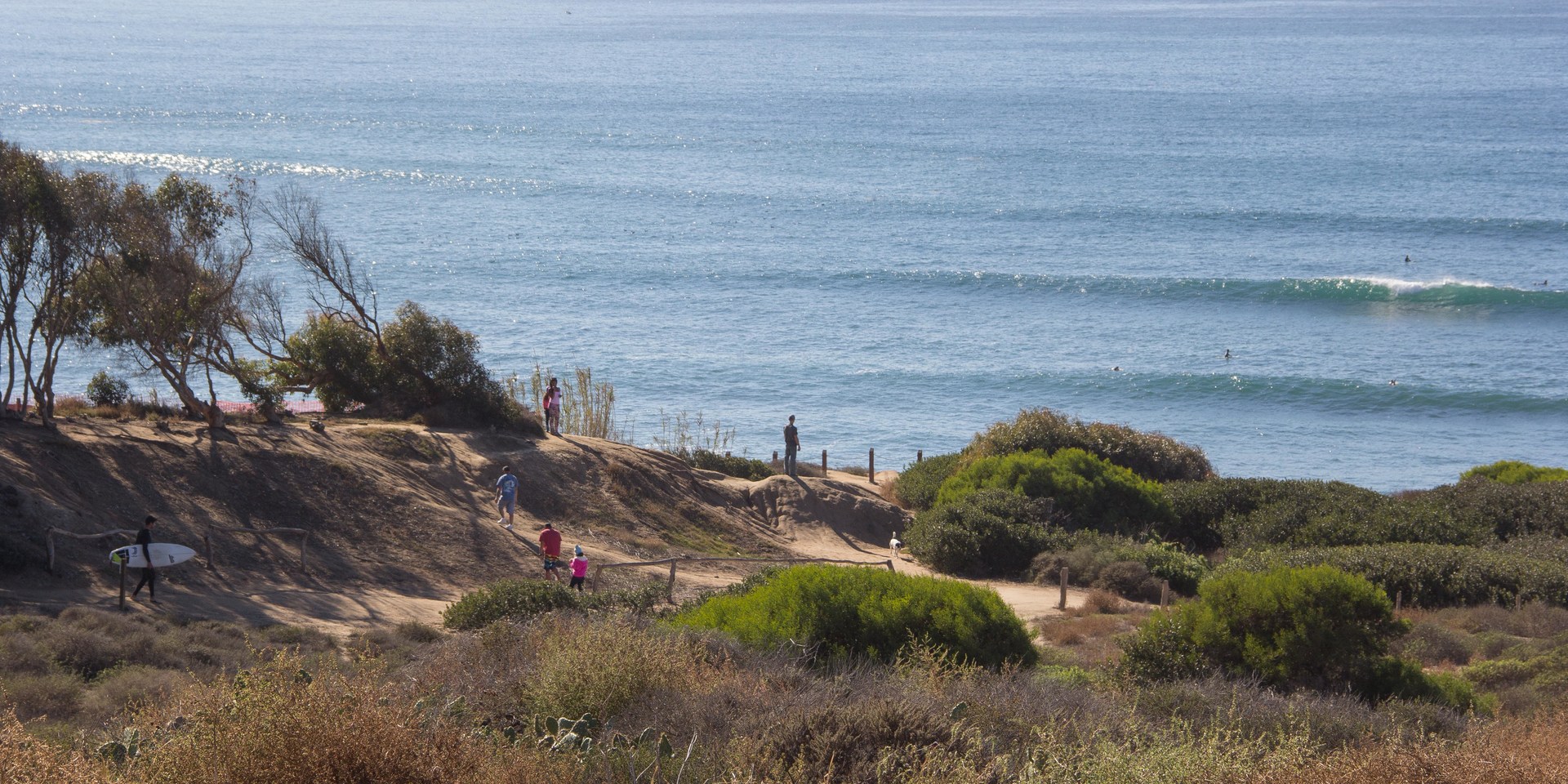You are just as likely to run into locals as tourists at this ecologically-diverse 68-acre park. People are drawn to the tide pools and sea caves as well as the wide variety of plants and animals that call the park home. Waves crash spectacularly against steep sandstone cliffs, atop from which visitors have an exceptional view of the Pacific Ocean. The cliffs are constantly in the process of changing shape as the waves make small alterations in them. The water chisels off bits of stone, creating unique fissures, caves, and tide pools. A close look at the base of the cliffs reveals shale that has been there for at least 75 million years. Dinosaur enthusiasts will be happy to hear that mosasaurs once populated this area. Check out the San Diego Natural History Museum if you want to see mosasaur fossils in person.
For centuries this land was a seasonal destination for American Kumeyaay Indians who enjoyed the readily-available food sources and scenic landscape. By the time the 1915 Panama California Exposition came around, the park was being actively developed by a man named Albert Spalding. His alterations to the land included constructing stairways, bridges, and a swimming pool set in stone. The park has changed hands many times and undergone numerous restorations since then.
Despite the obvious human presence, many species of animals can be spotted throughout the park. Gopher snakes, alligator lizards, and western-bellied racers are some of the more common reptiles. Hawks, wrens, cormorants, and finches are just a few of the many bird species that can be seen darting about. In terms of mammals, you are likely to come across a desert cottontail, pocket mouse, or desert wood rat. Keep an eye out for native plants such as coastal bluff scrub. Unfortunately, many native plants have struggled due to an infestation of invasive flora. The crown daisies may look pretty, but they use up much-needed resources that the native plants require to survive.




















Comments
Sign In and share them.